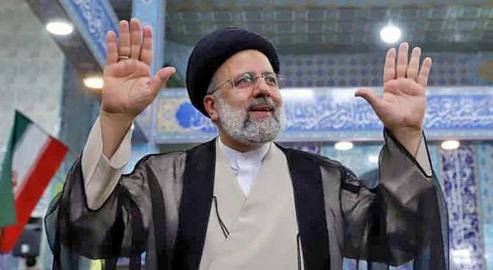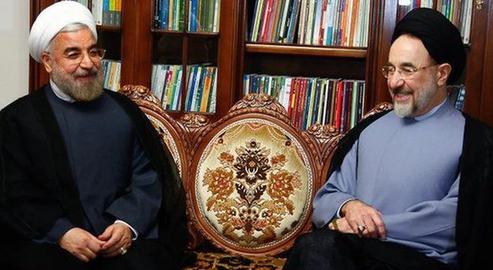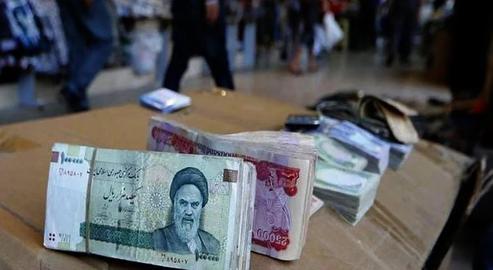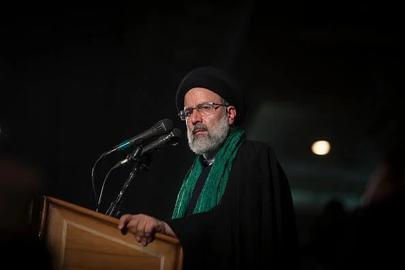"Let the government be unified and fall completely into its own hands, so that it can be held responsible for everything, good or bad."
Such was the argument of some of those who preferred to stay at home on Friday, June 18, rather than vote in an election whose outcome they believed was already known.
A flicker of this attitude can be detected in the speeches of outgoing President Hassan Rouhani, and before him Mohammad Khatami. Both complained of sabotage during their tenures, and alluded to obstructions deliberately placed in their way by Iran’s unelected state and those closest to the Islamic Republic’s solid core of power.
"A crisis every nine days" was the famous lament coined during Khatami’s time by veteran reformist Behzad Nabavi, a deputy speaker of the sixth parliament. Under Hassan Rouhani, this might be modified to “a crisis every nine hours”.
On the assumption that these claims are true – that Iran’s unelected state has deliberately tried to undermine the elected components – a number of people chose the boycott on the basis that it might make the former more accountable. If both the “hidden” and people-facing elements were politically aligned, the argument went, the sabotage attempt might stop and no single individual could be scapegoated for state-wide deficiencies.
Does Political Unity Bring About Economic Growth?
The results of the 2021 election made it clear that as expected, Iran’s future government and parliament would be ideologically aligned. Both would be, in the Islamic Republic’s sense of the word, “revolutionary”, orthodox and conservative, as well as obedient to the whims of the Supreme Leader and his cronies.
The last two years have seen Ayatollah Khamenei firmly consolidate his power over both the Iranian executive and legislature. This creates the ideal conditions for he and his to enact new policies with ease.
This is not the first time, however, that every aspect of Iran’s decision-making structure has been principalist in nature. The same could be said of both the seventh and eighth parliaments under Mahmoud Ahmadinejad. Whether it had a tangible impact on Iran’s economy remains to be seen.
GDP growth is one means of measuring economic growth. According to both the Central Bank of Iran and the World Bank, between 2005 and 2013, the median economic growth in Iran was 1.6 percent but was marked by vast fluctuations due to the impact of sanctions.
To begin with at least, the government of Mahmoud Ahmadinejad enjoyed the unprecedented support of both the parliament and the Ayatollah. Despite this, it not only failed to resolve the nuclear issue but – after being referred to the UN Security Council – it managed to turn it into a multinational boycott of Iran by the US and the European Union. An internal consensus there might have been, but an international consensus against Iran made the difference.
Economic growth in Iran as a % of GDP from 2005 to 2013. Source: World Bank
Inflation No Matter the Political Weather
Inflation is another important indicator of a state’s economic performance. The Central Bank of Iran’s reports state that from 2006 to 2013, the consumer price index – the average price of a basket of household goods in – grew overall by about 295 percent. In other words, ordinary Iranians’ day-to-day living expenses quadrupled under the Ahmadinejad-era unified state.
The average annual inflation rate during that period was 19.85 percent; about the same as the long-term average for the Iranian economy, but notably higher than it had been during Mohammad Khatami's two terms from 1998 to 2005, when the average was about 15 percent.
The inflation rate in Iran from 2006 to 2013. Source: World Bank
The Fallacy of Unemployment Rates
Between 2006 and 2013, the official unemployment rate in Iran ranged from an eight-year low of 10.4 percent in 2008 to a peak of 13.5 percent in 2010. The average annual unemployment rate was 11.6 percent: about one percent lower than the average during the Khatami administration.
This, however, is only half of the story. The employment ratio, meanwhile, is the percentage of Iran’s total working-age population that was in employment at a given time. It reached 35.8 percent in 2006 and stood at 33.7 percent by the end of 2013, meaning that by the end of the period, fewer of those of working age were able to find a job.
The employment rate is calculated as a percentage of the “active” population. During the Ahmadinejad era a total of 4,863,000 people were added to the “inactive” population: people of working age no longer active in the labor market. By the end of his term in 2013 compared to the beginning in 2008, just 351,000 people had joined the active working population.
The unemployment rate in Iran from 2006 to 2013. Source: World Bank
All of this occurred at a time when, initially at least, Iran’s oil revenues were reaching all-time highs in the decades since the Islamic Revolution. Despite this, the economic situation did not improve. Revenues plummeted again not because of disunity within the Iranian governance structure, but because of the policies it jointly chose to pursue.
The Sun Sets on Unified Power
Mahmoud Ahmadinejad, who had served as the mayor of Tehran before becoming president, began his tenure with close ties to Iran’s economic institutions, including those affiliated with the military and the clerical caste. This led in turn to their enrichment.
In June 2012, Ahmadinejad signed contracts with Chinese firms for a number of projects, such as the $2 billion development of Phases 15 and 16 of South Pars and building the Bakhtiari dam and power plant in Lorestan province. These were duly handed over to the Revolutionary Guards’ Khatam al-Anbiya Construction Headquarters for implementation.
Elsewhere, back in September 2009, a 51 percent share of the Iran Telecommunication Company had been transferred to the Etemad Mobin consortium, also associated with the Revolutionary Guards, along with the Executive Headquarters of Imam's Directive.
The favors seemingly went both ways. In December 2012, in an interview with the Tehran-based newspaper Mardomsalari, IRGC commander Mohammad Esmaeil Kowsari confirmed: "The IRGC has not withheld any assistance to the government during these years and has helped Ahmadinejad in many areas."
The honeymoon of Iran’s elected representatives and unelected state, though, did not last forever. In summer 2011 the cracks began to show, with Ahmadinejad criticizing the informal borders and “invisible wharves” he said were allowing currency and goods to be smuggled into the country. In a veiled reference to the IRGC, he spoke infamously of “our smuggler brothers”.
During that same conference, Ahmadinejad called on the military and law enforcement agencies to only make by-the-book requests and use legal methods to meet their needs instead of circumventing the law. The differences grew starker as his second term wore on, with Ayatollah Khamenei stepping in to defend the Ministers of Intelligence and Defense, arguing with the president, and ultimately barring Ahmadinejad from reinstating Esfandiar Rahim Mashaei as vice president over his so-called “deviant” tendencies.
By the end, almost none of the principalists who had supported Ahmadinejad still considered his government to be that approved by the Imam-e Zaman. Those who had called him the “miracle of the third millennium” were similarly in doubt.
But neither did any of them take any responsibility for the economic record of the period of unified power. Collective accountability was never acknowledged. On the contrary, as Ali Saeedi, the representative of the Supreme Leader in the Revolutionary Guards, later told Etemad: “I do not deny my previous support for Mr. Ahmadinejad... We did not have the foresight to know what was going on in Mr. Ahmadinejad's mind and what he would want to do in the future."
Fighting Corruption With Corruption
One of Ebrahim Raisi’s biggest pre-electoral campaign commitments was to fight corruption in Iran. But simultaneously, there is almost no ground between Raisi and the unelected state. Now, Raisi will either have to ask the Guards and the Leader’s parastatal entities to begin operating transparently and by the book, or accept the inevitability of breaking his sole intelligible election promise.
The latter seems more likely. For this reason, even if the economic situation in Iran nominally improves according to some indicators, it will remain unstable. The conflicts of interest within the unelected state – which, after all, is never truly unified – will have as much of an impact on the Iranian economy as Raisi’s surface-level domestic policies.
Real competition, meanwhile, will also continue to be stifled. Assuming that a dynamic, independent and competitive private sector, together with effective regulatory systems and the free exchange of trustworthy information are requisites to economic growth, it has to be admitted that this is less likely to be achieved in the newly-uniform political conditions.
Having “revolutionary” principalists in the driving seat at every stage of the Islamic Republic’s governance is no guarantee of prosperity. But nor is it a guarantee of accountability – at the individual level or the collective.
Related coverage:
Ebrahim Raisi's Prospects as Iran's First Sanctioned President-Elect
Ebrahim Raisi’s Presidential Candidacy: A Gamble on Succeeding Khamenei
The Eight-Year Rise and Fall of the Iranian Economy
visit the accountability section
In this section of Iran Wire, you can contact the officials and launch your campaign for various problems



























comments